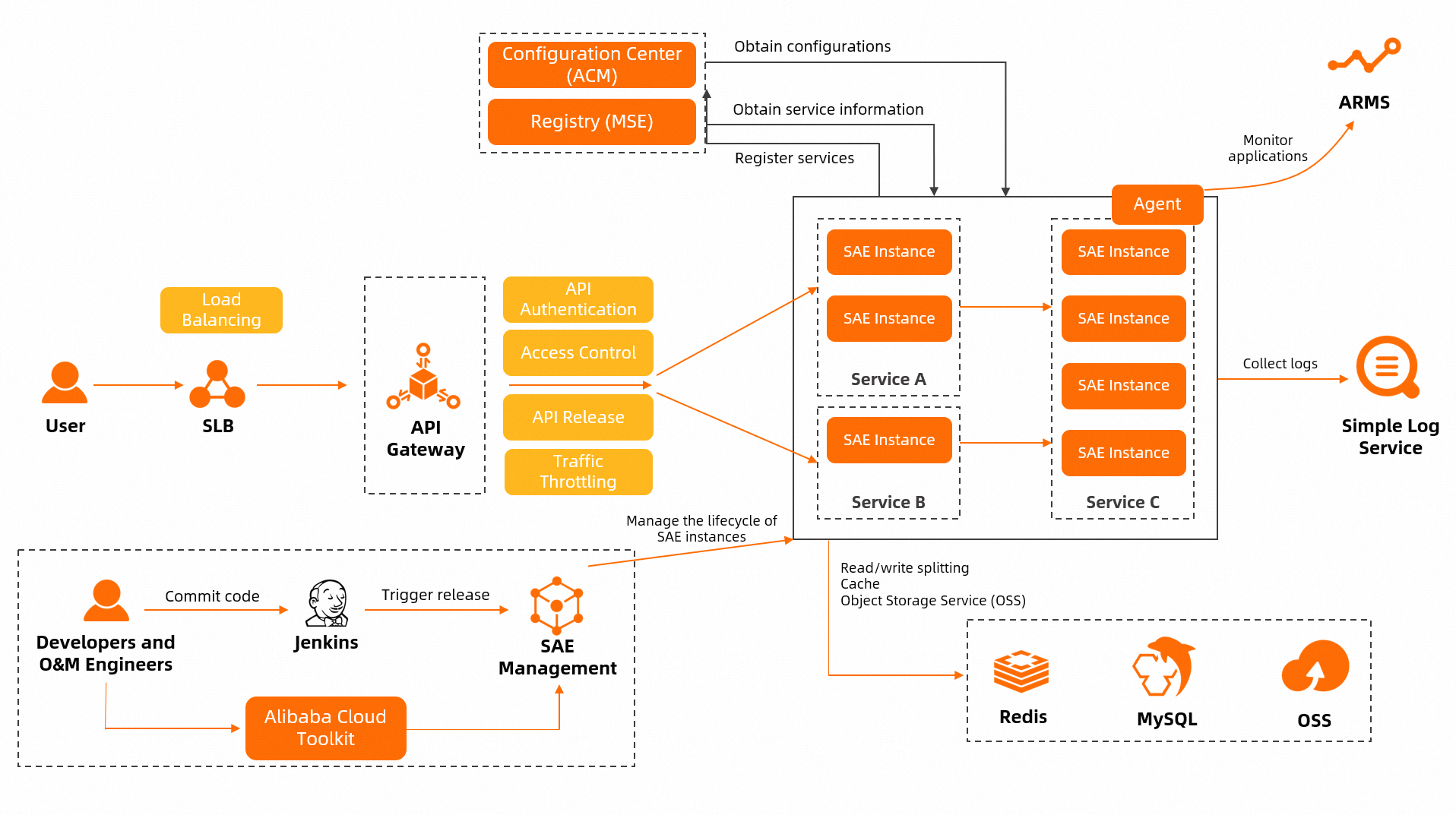Serverless App Engine (SAE) is an easy-to-use service that helps you migrate your applications to the cloud. You do not need to manage or maintain the underlying infrastructure such as IaaS. You can use SAE resources based on your business requirements and pay for the resources. SAE supports multiple programming languages and provides high scalability. SAE can help you resolve multiple issues such as complex O&M operations, low resource utilization, and low development iteration efficiency. This topic describes how SAE helps the online education app Octonauts English quickly perform cloud migration.
Background information
Octonauts English, produced by Chengdu Chuangan Times Technology Co., Ltd., is an English learning app that is authorized by Wanda Kids. Octonauts English combines education with multiple advanced technologies, such as AI, cloud computing, and motion capture, based on traditional English learning styles such as immersive teaching provided by Northern American foreign teachers and Cambridge teaching system for children. Octonauts English is a systemized app that provides an educational experience in the English language and emotional intelligence (EQ), and is developed based on intellectual properties (IPs) for kids. The app is designed for children aged from 2 to 8 years and aims to help Chinese children improve their English skills in listening, speaking, reading, writing, and comprehension.
Challenges
The Octonauts English app used self-managed Kubernetes clusters to manage computing resources and deploy business. The following table describes the challenges faced by Octonauts English as business grows. The table also describes the benefits of SAE.
Challenge | Benefit |
O&M operations are complex. Octonauts English must maintain Kubernetes clusters, perform CLI-based O&M operations, and integrate all dependent cloud services. | SAE supports the zero code modification of microservices applications or monolithic applications. SAE seamlessly integrates with various cloud services and provides one-stop PaaS capabilities. |
Iteration efficiency is low. The O&M engineers of Octonauts English need to focus on business and develop and maintain underlying components. | SAE allows developers to focus on business without the need to maintain Kubernetes clusters or IaaS hosts. |
Resource costs are high. Octonauts English needs to retain IaaS hosts for a long period of time. In this case, idle resources remain unused during off-peak hours. | SAE allows you to use resources based on your business requirements and pay for the resources by using the pay-as-you-go billing method. No idle resources are wasted. SAE provides the auto scaling and one-click start and stop features that can help you reduce the costs for idle resources. |
The efficiency of capacity evaluation is low. The evaluation results are inaccurate because all evaluation operations are manually performed. | SAE provides multiple types of auto scaling policies, such as scheduled auto scaling policies and auto scaling policies that are triggered based on metrics, such as CPU utilization and memory usage. SAE provides flexible auto scaling policies to help you handle traffic surges with ease and use resources based on your business requirements. |
The system is not stable. The service of Octonauts English is unavailable due to potential misoperations that are performed on kubernetes YAML files or underlying resources. | SAE ensures the stability of microservices components and Kubernetes clusters by hiding the details of cloud-native Kubernetes resources. SAE uses bastion hosts to isolate resources and effectively prevent production environment failures that are caused by misoperations performed by developers. |
Solution
The following figure shows the solution that is used by Octonauts English.

When Octonauts English migrates self-managed Kubernetes clusters to SAE, Octonauts English can connect SAE to its original O&M system by using Jenkins and bastion hosts without the need to modify business code. Octonauts English is an online education app subject to obvious traffic fluctuations. The elastic scaling capability of SAE can meet the business requirements of Octonauts English and help handle the related issues.
After Octonauts English migrates its business to SAE, SAE becomes a computing resource pool in which Octonauts English can use resources based on business requirements and pays for the resources by using the pay-as-you-go billing method. SAE is an application-oriented PaaS platform that hides the complex underlying details of Kubernetes O&M and provides capabilities such as application lifecycle management and monitoring. SAE is integrated with various cloud services, such as storage, networking, database, and logging, to provide one-stop PaaS capabilities.
Effect
Zero code modification: SAE supports zero code modification of microservices applications or monolithic applications.
Elasticity and cost-effectiveness: The costs on testing environments are reduced by more than two-thirds because Octonauts English uses the one-click application start and stop feature of SAE. The hardware costs are reduced by approximately 25% because Octonauts English uses the auto scaling feature of SAE. Compared with the original method that is used to retain Elastic Compute Service (ECS) resources, SAE can automatically scale applications within seconds when traffic fluctuations occur and ensure the service level agreement (SLA).
Maintenance-free and improved efficiency: SAE allows developers to focus on business without the need to maintain Kubernetes clusters or IaaS hosts. The developers can use Jenkins or Maven plug-ins to deploy applications to SAE, which simplifies the O&M process.
Stability: SAE provides a built-in microservices framework and Kubernetes clusters. SAE isolates resources by using bastion hosts to effectively prevent production environment failures that are caused by misoperations performed by developers.
Service integration and one-stop capabilities: SAE provides a one-stop solution that automatically integrates Alibaba Cloud infrastructure services, microservices peripheral services, and DevOps services.
 Elastic Compute Service (ECS)
Elastic Compute Service (ECS)
 Container Compute Service (ACS)
Container Compute Service (ACS)



























